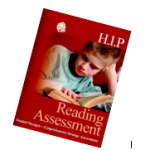Preventing the Pitfalls of Pair-Share
 The “Think-Pair-Share” model was developed over 30 years ago to help students clarify and articulate their thinking. Its power has been documented in many research studies, and for good reason. All too often, whole class discussion is dominated by a handful of students. When students are required to share their thinking with a partner, they get more talk time and less chance to hide behind more assertive peers. More importantly, they have a less public setting to organize and rehearse their own thinking, consider alternative viewpoints, and put their ideas into words.
The “Think-Pair-Share” model was developed over 30 years ago to help students clarify and articulate their thinking. Its power has been documented in many research studies, and for good reason. All too often, whole class discussion is dominated by a handful of students. When students are required to share their thinking with a partner, they get more talk time and less chance to hide behind more assertive peers. More importantly, they have a less public setting to organize and rehearse their own thinking, consider alternative viewpoints, and put their ideas into words.
It sounds simple: ask a question and have students discuss the answer with a partner. What could go wrong? And yet, in spite of compelling research in its favour, many of us have found that this strategy hasn’t always generating the rich discussion and deep thinking that we hope for.
There are two ways that PAIR-SHARE can go awry:
1. Students don’t know how to have a discussion with a partner. There are certain mores that go along with civil discourse (and unfortunately, students aren’t seeing many good models in social media). They might not know how to respond to someone elses’s ideas or to provide justification for their own.
2. Large-group sharing can be railroaded by irrelevant or even incorrect information. When students are invited to volunteer to share or are selected at random, their contributions might not contribute most effectively to the large group’s understanding. Carefully selecting those who are invited to share helps to ensure that everyone benefits from the conversation.
Click here for ideas about how to make PAIR-SHARE work in your classroom.



